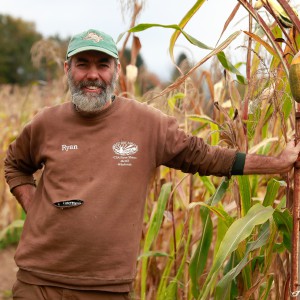‘To Stir, with Love’: Cooking asparagus risotto is a combination of chemistry and magic
| Published: 05-27-2025 8:00 AM |
Next week, I plan to feature rhubarb, one of my favorite spring foods. Today, however, I’m returning to that other beloved seasonal product in our area, asparagus, or spearage as a culinary historian friend calls it. A few days ago, I had a hankering to stir it into some risotto.
I visited Italy several times as a child, but I didn’t taste risotto until I was an adult. My father’s business in Italy usually took us to Rome.
Although he was Jewish, he worked on projects with the Vatican. He enjoyed the perspective he brought to the Catholic Church as an outsider. So did the prelates there, including the Pope.
Although risotto is now served extensively in Rome, it isn’t native to that city and wasn’t prominent when I was a 7-year-old sampling Roman cuisine. Risotto was probably invented in Milan, nearly 300 miles away. (Warning: all stories about food inventions should be taken with a grain of salt. Perhaps even half a cup.)
Of course, I ate happily in Rome anyway, ignorant of the lure of risotto. There was plenty of pasta to explore, including my first sampling of Spaghetti alla Carbonara.
I learned about risotto back in this country from Pat Leuchtman, who used to write for this newspaper and lives in Greenfield. Pat is a wonderful cook, so when she gave me her recipe I knew I had to try it.
It was a revelation. Risotto takes a bit of work. Ideally, the cook should stir it very frequently as it comes together. That stirring doesn’t take forever, thank goodness, maybe about half an hour. Still, it’s unwise to leave the risotto for long.
My friend Alice from Louisiana always says of roux, that secret sauce of Cajun cooking, that while making it one should never, ever answer the phone or leave the room or even get too involved in watching a soap opera. (Alice’s whole family loves the soaps.)
Article continues after...
Yesterday's Most Read Articles
 Marine vet gets 24 months of supervised release in stolen valor case, must pay nearly $300K in restitution
Marine vet gets 24 months of supervised release in stolen valor case, must pay nearly $300K in restitution
 With a little help from his community: Northfield Mount Hermon teacher fighting rare form of cancer begins clinical trial
With a little help from his community: Northfield Mount Hermon teacher fighting rare form of cancer begins clinical trial
 Federal judge sets schedule for lawsuit against Dept. of Agriculture
Federal judge sets schedule for lawsuit against Dept. of Agriculture
 Local trans advocates in wake of Supreme Court decision: ‘We will not back down’
Local trans advocates in wake of Supreme Court decision: ‘We will not back down’
 ‘You can just do it forever’: Belly dance classes and shows grow steady local following
‘You can just do it forever’: Belly dance classes and shows grow steady local following
 $5.74M to fund large-scale renovation at Greenfield’s Winslow Building
$5.74M to fund large-scale renovation at Greenfield’s Winslow Building
Just stir, said Alice, with focus and care. The same words could be applied to risotto. In fact, according to food writer Mark Bittman, when he edited “Cook’s Magazine” and ran a story about the rice dish, the magazine used the title “To Stir, with Love.”
Bittman cringed recalling the name. I love a good pun (and a good film reference!) so I embrace the title and have in fact copied it here. I choose to call this an homage rather than plagiarism.
Risotto is one of those dishes that remind us that cooking is a combination of chemistry and magic. The chemistry starts with the use of a fat, fairly short-grained rice like Arborio. One starts by sautéing the rice in butter and/or oil to coat the grains and keep them from glomming together as they continue to cook.
One adds a little wine and then warm stock, slowly so that the rice can absorb it a little at a time. Somewhere along the line (after about 30 minutes of that stirring with love) the magic comes into play, although I’m sure that pedants would argue that the magic is nothing more than chemistry.
As the cooking continues, the cook must taste the risotto from time to time to see how it is progressing. At the magic moment, instead of feeling like a grain in one’s mouth, the rice suddenly becomes creamy. This metamorphosis is hard to describe but easy to taste and feel.
One quickly adds other ingredients and serves this very special dish.
One could argue that risotto is inconvenient since it keeps the cook in the kitchen away from her dinner guests. My solution to this problem is to ask my guests to gather for cocktails and conversation around my kitchen table so we can spend time together as I stir the risotto.
I ask them to remind me to get back to work if I start to get distracted and stop stirring for a couple of minutes.
If you want to add the asparagus earlier in the process than I do in the recipe below, feel free. In that case, the asparagus will blend more effectively in with the risotto.
I prefer to blanch the asparagus and add it toward the end so it can add maximum texture and color to the final product. We have fresh local asparagus for a limited time here; I want to let it stand out as much as possible.
Some people, including Ruth Rogers, the co-founder of London’s River Café, believe that no ingredient in risotto should be larger than the grains of rice. I like to chop my asparagus, but I don’t worry about making it super small. I love seeing and eating it in any size.
Happy stirring. Don’t forget the love.
Ingredients:
6 tablespoons (3/4 stick) sweet butter, divided
2/3 cup chopped onion
1 1/4 cups Arborio rice
1/2 cup white wine (approximately)
1/2 bell pepper, chopped (yellow and orange are good colors)
4 cups simmering chicken or vegetable stock (or as needed; you may use water if you run out of stock)
2 cups chopped asparagus, cooked aldente
1 tablespoon chopped parsley (plus a little more if you like)
1/2 cup grated Parmesan cheese, plus a bit more if desired (I have tried Swiss cheese, which often goes well with asparagus, but I believe the Parmesan is more subtle and lets the asparagus shine more.)
Instructions:
In a 3-quart pan melt 4 tablespoons of butter (1/2 stick). Stir in the onion. Cook, stirring, for 5 minutes. Add the rice. Cook for 1 minute, stirring so that each grain of rice gets coated with a little butter. Add the wine plus the chopped bell pepper. Stir. Add 1 cup of stock and keep stirring.
As the mixture cooks and dries up, add the remaining stock a bit at a time. Stir frequently but not constantly. Cooking will take quite a while — somewhere between half an hour and 45 minutes. The risotto is done with it suddenly tastes creamy.
When you think your risotto is almost done, toss in the asparagus.
Just before serving, add the parsley, the remaining butter, and the cheese. Toss a little more parsley on top if you like for a garnish. Serves 6.
Tinky Weisblat is an award-winning cookbook author and singer known as the Diva of Deliciousness. Visit her website, TinkyCooks.com.









 ‘I’ve met friends in my books’: Eric Carle Museum celebrates author, illustrator Grace Lin with retrospective exhibition
‘I’ve met friends in my books’: Eric Carle Museum celebrates author, illustrator Grace Lin with retrospective exhibition Valley Bounty: Rain or shine, strawberries are here: Teddy C. Smiarowski Farm welcomes another pick-your-own season
Valley Bounty: Rain or shine, strawberries are here: Teddy C. Smiarowski Farm welcomes another pick-your-own season
